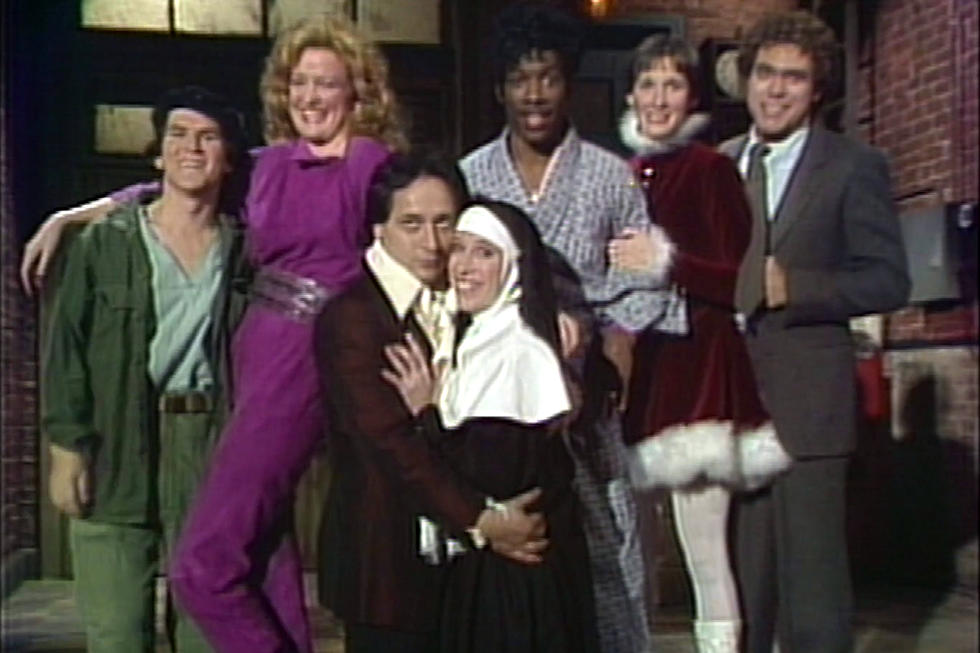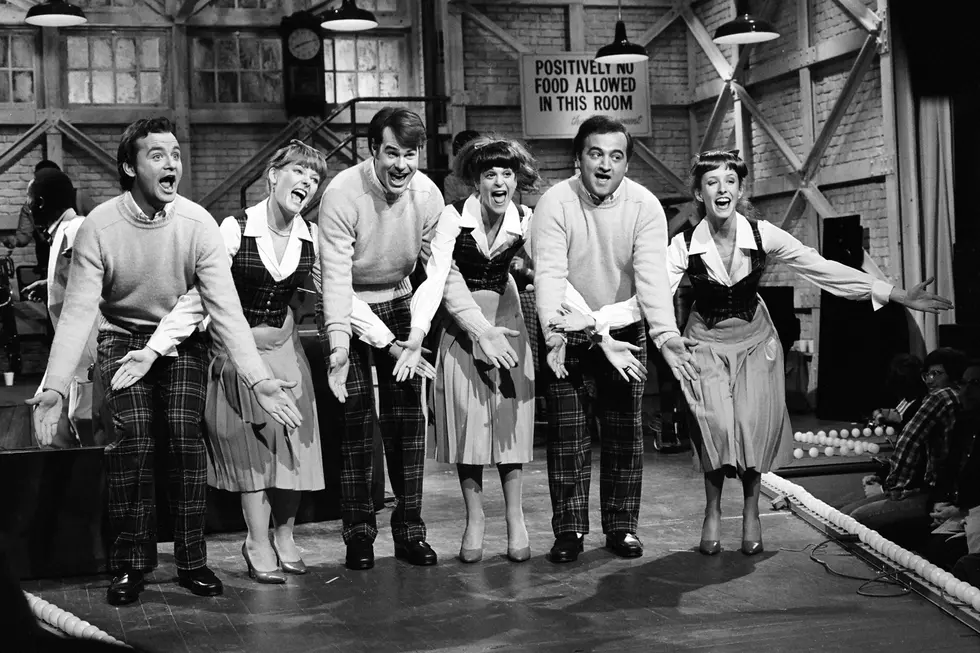
40 Years Ago: Why ‘SNL’ Briefly Dropped Its ‘Live From New York’ Opening Line
Change was in the air on Oct. 3, 1981 as Saturday Night Live launched its seventh season.
Six months earlier, the show’s previous season had ended in chaos. Dick Ebersol took over as the show’s producer, replacing Jean Doumanian, who had lasted less than a year in the role after series creator Lorne Michaels left in 1980.
Ebersol was determined to overhaul SNL. To that end, only two cast members from Doumanian’s tenure would still be featured on the show to start the new season: Eddie Murphy and Joe Piscopo. Mary Gross, Christine Ebersole and Brian Doyle-Murray, who had previously been a writer on the show, were among the cast members Ebersol added.
Faces changed behind the scenes, as well. Ebersol brought in new writers and staff, furthering his goal to return to the luster to Saturday Night Live. The show even sounded different as Don Pardo, the legendary voice known for his work as SNL’s announcer, was replaced by Mel Brandt.
Still, Ebersol didn’t have a background in comedy, a fact which raised more than a few eyebrows among the SNL team.
“Dick didn’t really have a lot to say about the comedy,” Brad Hall, a cast member at the time, said in Live From New York: The Complete Uncensored History of Saturday Night Live. “He would sort of go into the room and pick the sketches. It was much more like he was a judge than he was involved in the process at all.
“The very funniest sketch at the table [read] would almost always get in the show – but so would the worst sketch,” Hall added. “And it was a little bit like, ‘Oh, God.’”
Andrew Smith, one of SNL’s writers, noted that Ebersol was “tremendously successful with the network. He could get anything out of the network, whether it was money or one thing or another. But he obviously wasn’t a comedy writer and was somewhat foreign to comedy.”
Writer and cast member Tim Kazurinsky said the problem with their new boss was that he was “always looking for the lowest common denominator. The moral majority was really big then, and he didn’t want to do anything to piss anybody off or do anything controversial. I had just come out of Second City, and he tells me, ‘I don’t want to do political things; I don’t want to do controversial things. Who do you do impersonations of? Can you do Mickey Rooney?’ I was like, ‘Fuck off!’”
Ebersol’s comedy-related decisions may have frustrated some staff, but they actually weren’t that far from the norm for this show. After all, SNL had already experienced major cast turnover, branding changes and a long list of writers who came and went.
Arguably the biggest change – at least in terms of the program’s identity – was how Ebersol revamped the top of the show. From day one, Saturday Night Live (originally called NBC’s Saturday Night) would begin each episode with a sketch dubbed the cold open, followed by a moment when a cast member or guest would look at the camera and utter the the famous tagline: “Live from New York, it’s Saturday night!”
Determined to put his own unique stamp on the program, Ebersol did away with the line. In its place, the producer had his announcer say, “Now from New York, the most dangerous city in the world, it’s Saturday Night Live!”
Like many of Ebersol's choices, the change was poorly received.The famous opening line returned for season eight, as did cold opens and Pardo as announcer. “Live from New York, it’s Saturday night!” has remained a mainstay ever since and ranks among the most identifiable catchphrases in television history.
15 Guests Who Were Banned From 'Saturday Night Live'
Did SNL Finally Confirm the Fifth Beatle?
More From Ultimate Classic Rock









